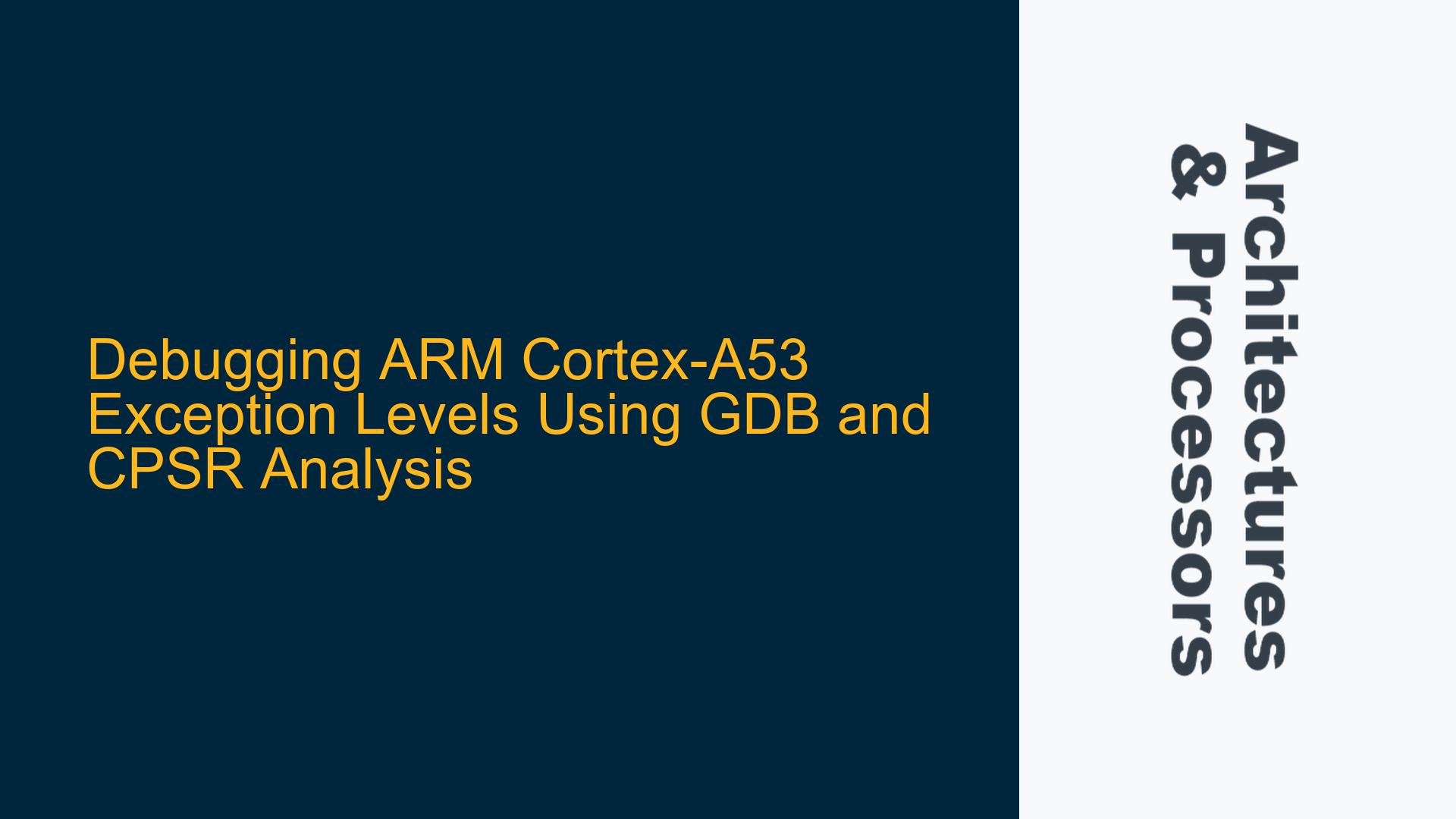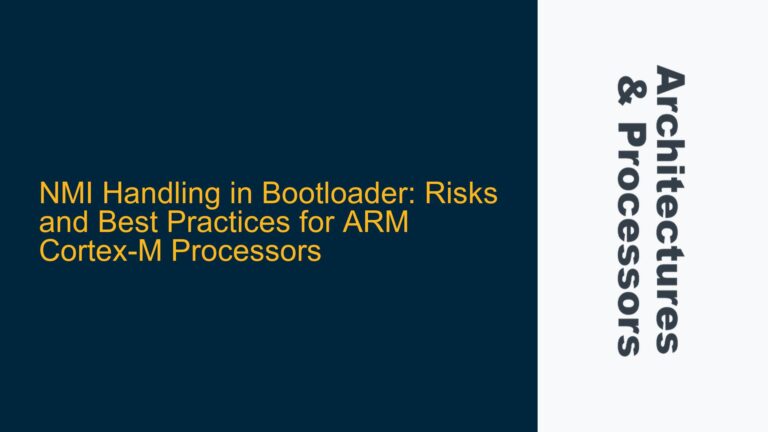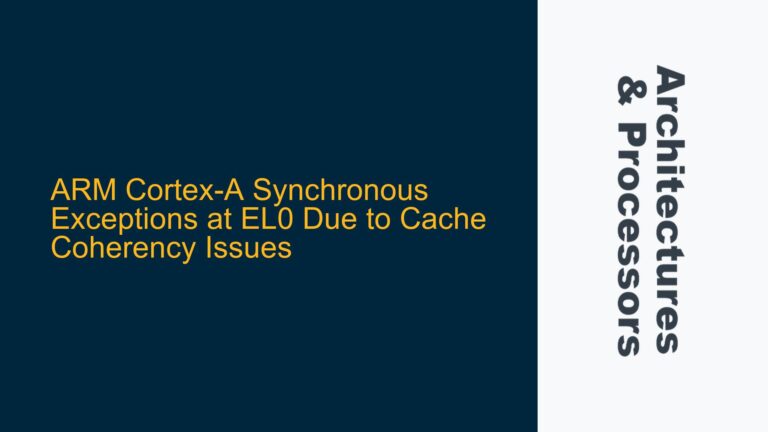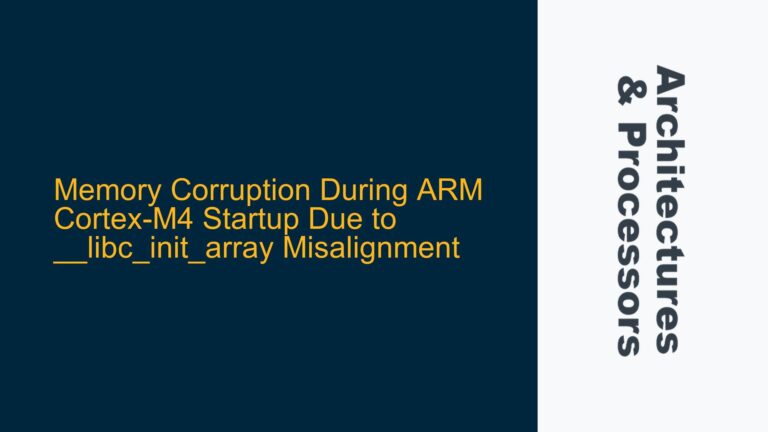Understanding Exception Levels in ARM Cortex-A53 and GDB Debugging Challenges
The ARM Cortex-A53 processor, part of the ARMv8-A architecture, implements a hierarchical privilege model through Exception Levels (ELs). These levels, ranging from EL0 (user mode) to EL3 (secure monitor mode), dictate the privilege and capabilities of the executing code. Debugging software running on the Cortex-A53 often requires determining the current Exception Level to understand the context of execution, especially when dealing with low-level firmware, hypervisors, or operating systems. However, identifying the current Exception Level using GDB can be challenging due to the nuances of ARMv8-A system registers and GDB’s interpretation of these registers.
The primary system register for determining the current Exception Level is CurrentEL, which is part of the ARMv8-A architecture’s system register set. This register provides a direct readout of the current Exception Level in bits [3:2]. However, GDB does not always provide direct access to this register, leading developers to rely on indirect methods such as examining the CPSR (Current Program Status Register) or SPSR (Saved Program Status Register) for clues about the current Exception Level.
The challenge arises because GDB’s interpretation of the CPSR register may not always align with the developer’s expectations. While the CPSR contains bits that indicate the Exception Level, these bits are not always explicitly decoded by GDB, requiring manual interpretation. This post delves into the technical details of identifying the current Exception Level using GDB, explores the underlying causes of common debugging challenges, and provides actionable solutions for accurate Exception Level determination.
CPSR Bit Interpretation and GDB’s Handling of ARMv8-A System Registers
The CPSR register in ARMv8-A architecture plays a critical role in determining the current execution state, including the Exception Level. Bits [3:2] of the CPSR encode the current Exception Level as follows:
00: EL0 (User mode)01: EL1 (Operating system kernel mode)10: EL2 (Hypervisor mode)11: EL3 (Secure monitor mode)
However, GDB’s handling of the CPSR register can be inconsistent. While some versions of GDB may decode the Exception Level bits and display them explicitly, others may only show the raw hexadecimal value of the CPSR. This inconsistency can lead to confusion, especially when developers are unaware of the need to manually decode the CPSR bits.
For example, a CPSR value of 0x400003cd indicates that the processor is running at EL3, as bits [3:2] are 11. Similarly, a CPSR value of 0x60000045 corresponds to EL1, as bits [3:2] are 01. However, GDB may not always display this information explicitly, requiring developers to perform the bitwise extraction themselves.
The root cause of this issue lies in the way GDB interacts with the ARMv8-A system registers. GDB relies on the underlying debug hardware and software stack to access system registers like CurrentEL and CPSR. If the debug hardware or software stack does not provide direct access to these registers, GDB may fall back to indirect methods, such as reading the CPSR from the processor’s general-purpose register set. This indirect access can lead to incomplete or inconsistent decoding of the CPSR register.
Practical Steps for Accurate Exception Level Determination Using GDB
To accurately determine the current Exception Level using GDB, developers must follow a systematic approach that combines direct register access, manual bitwise decoding, and validation of the results. Below are the detailed steps for achieving this:
Step 1: Accessing the CPSR Register in GDB
The first step is to access the CPSR register using GDB’s info registers command. This command displays the values of all general-purpose and special-purpose registers, including the CPSR. For example:
(gdb) info registers
x0 0x1 1
...
cpsr 0x60000045 [ EL=1 C Z ]
...
In this example, the CPSR value is 0x60000045, and GDB has decoded the Exception Level as EL1. However, if GDB does not decode the Exception Level, the raw CPSR value will be displayed without additional context.
Step 2: Manually Decoding the CPSR Bits
If GDB does not decode the Exception Level, developers must manually extract bits [3:2] from the CPSR value. This can be done using bitwise operations or by converting the hexadecimal value to binary and examining the relevant bits. For example:
CPSR = 0x400003cd(binary:01000000000000000000001111001101)- Bits [3:2]:
11(EL3)
- Bits [3:2]:
CPSR = 0x60000045(binary:01100000000000000000000001000101)- Bits [3:2]:
01(EL1)
- Bits [3:2]:
Step 3: Validating the Exception Level
Once the Exception Level has been determined, it is essential to validate the result by cross-referencing it with the expected execution context. For example, if the software is expected to run at EL1, but the CPSR indicates EL3, this discrepancy may indicate an issue with the software’s initialization or exception handling logic.
Step 4: Using Alternative Methods for Exception Level Determination
If accessing the CPSR register proves unreliable, developers can use alternative methods to determine the Exception Level. One such method is to write a small assembly routine that reads the CurrentEL register and stores its value in a general-purpose register. This value can then be examined using GDB. For example:
mrs x0, CurrentEL
After executing this instruction, the value of x0 will contain the current Exception Level, which can be accessed using GDB’s info registers command.
Step 5: Debugging Common Issues
Common issues when determining the Exception Level include incorrect CPSR decoding, incomplete GDB support for ARMv8-A system registers, and misconfigured debug hardware or software. To address these issues, developers should:
- Ensure that the GDB version being used supports ARMv8-A system registers.
- Verify that the debug hardware and software stack provide full access to the
CurrentELandCPSRregisters. - Cross-reference the
CPSRvalue with the expected execution context to identify discrepancies.
By following these steps, developers can accurately determine the current Exception Level when debugging ARM Cortex-A53 systems using GDB. This process not only aids in understanding the execution context but also helps identify and resolve issues related to privilege levels and exception handling.






